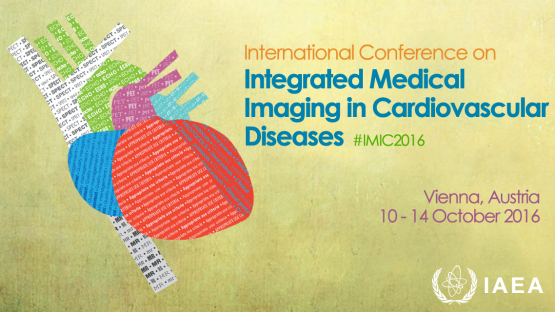One of the leading causes of death worldwide is cardiovascular diseases. In efforts to manage these heart-related diseases, eight techniques have been defined to help doctors more optimally use myocardial perfusion imaging (MPI) — a widely-used, low-risk and relatively inexpensive nuclear cardiology technique — in evaluating coronary artery disease, a type of cardiovascular disease. In an IAEA-supported project, researchers identified these cost-effective ‘best practices’ to optimize radiation exposure when using MPI without compromising patient care.
“Interventions, like MPI, are really a lifesaving procedure for many patients; however, at the same time, many people are concerned about radiation and the quality of the care,” said Andrew J. Einstein, Associate Professor of Medicine (in Radiology) at Columbia University and one of the lead researchers on the IAEA Nuclear Cardiology Protocols Cross-Sectional Study (INCAPS). “In response to this need, we conducted a worldwide, cross-sectional observational study showing numerous opportunities to reduce radiation exposure globally.”
This study will be one of the many topics discussed at the IAEA’s International Conference on Integrated Medical Imaging in Cardiovascular Diseases (IMIC) from 10 to 14 October 2016. The conference will gather more than 500 clinicians, scientists, and professionals working on all aspects of medical imaging applied to the management of cardiovascular diseases. Participants will discuss and evaluate recent developments in the field as well as future challenges and trends. Those interested in presenting should submit an abstract by 15 April 2016. Find out more about the conference and submission details here.
Helping hearts worldwide
The global burden of cardiovascular diseases — a group of disorders that can affect a person’s heart and blood vessels — is growing due to unhealthy diets, sedentary lifestyles, and an increase in the prevalence of health conditions like diabetes. Doctors can use nuclear cardiology tools like MPI that use radiopharmaceuticals — medical drugs that contain small amounts of radioactive substances — and imaging machines to ‘look’ inside a patient’s heart and find out how it is functioning and to check its overall condition. This helps them to make a diagnosis for preparing a course of treatment.
Data from the INCAPS study revealed enormous variability in the use of nuclear cardiology techniques and best practices around the globe. It provided valuable information for the researchers to design eight, easy-to-implement recommendations to help doctors optimize and tailor, at little to no additional cost, the amount of radiation and the quality of care received by patients in nuclear cardiology.
“What the laboratories were doing in the past was not wrong, as those were also recommended doses, but now, in the light of advances in technology, we are proposing new recommendations to reduce the doses and how doctors care for patients,” said Diana Paez, Head of the Nuclear Medicine and Diagnostic Imaging Section at the IAEA. The eight recommendations range from limiting the types of tests performed and avoiding the use of dual-isotope techniques, to using a patient’s weight to determine appropriate doses of radiopharmaceuticals.
The study showed that the more these recommended best practices were implemented, the more laboratories were able to minimize radiation doses while maintaining high quality images and clinical information. “As a patient, you should expect to receive less radiation in a laboratory that uses these best practices. This is true for patients across the globe,” Einstein said.
INCAPS researchers gathered data from 308 laboratories from 65 countries. These laboratories provided the results from 7911 MPI studies taken over the course of one selected week in the spring of 2013. “It is like a snapshot in time. We wanted to see what a lab does in a typical week all around the same time,” said Einstein. It is the first time a comprehensive data set has been gathered on nuclear cardiology practices, including radiation dosing, he added. Read more about the project findings in the freely available scientific journal article published in the European Heart Journal, one of the top three peer-reviewed cardiology journals globally.
Knowledge is key
Drawing in part on this study, the IAEA has developed and published freely available learning tools, webinars and training courses to reinforce the use of these new eight recommendations and other safe and best practices in nuclear diagnostic imaging.
“Education is one of the major components of the services we provide. It is not only for the practitioners that are doing nuclear cardiology, but to also raise awareness for the referring physicians on how to use and when to ask for these kinds of studies,” Paez said. “Unless you know what’s happening, you don’t know how to handle it. Knowledge is key. Once you know, you can do something about it.”
Reaching all areas of the globe
The study brought together experts from around the world, with the IAEA taking a role as a worldwide coordinator. The project relied on the input and support of organizations and professional societies including the American Society of Nuclear Cardiology, Asian Regional Cooperative Council for Nuclear Medicine, Australian and New Zealand Society of Nuclear Medicine, British Nuclear Medicine Society/British Nuclear Cardiology Society, Comissão Nacional de Energia Nuclear, European Association of Nuclear Medicine, European Council of Nuclear Cardiology, and Intersocietal Accreditation Commission, among others.




